
Earlier this week I spent the best part of six hours sitting in the open air, in which time I saw precisely three birds, of three different species. The paucity of birds is easily explained: I was watching tennis on Wimbledon’s famed Centre Court, which is about as close to a bird-free zone as you can get. There’s a reason for this. Every morning during the championships, a Harris’s hawk by the name of Rufous is flown around the stands and the grounds, flushing out any birds that happen to be lurking there. Tennis and birds don’t mix, as there are few things more distracting than having a bird fly over just as you are about to serve, or for a pigeon to land on the court with you.
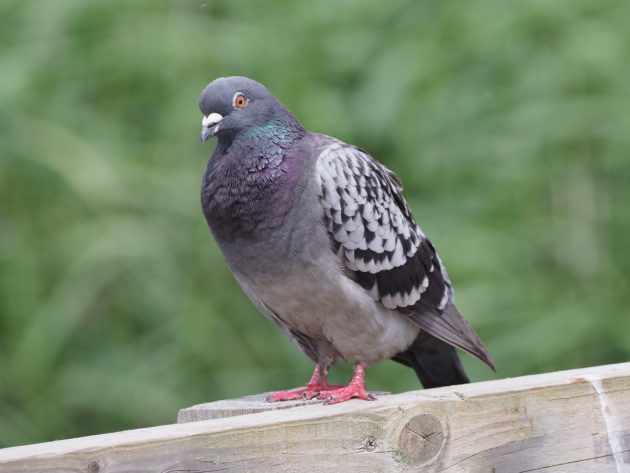
Feral Pigeon: the classic urban bird, and an unwelcome one at Wimbledon
Two of the three species I saw were quite predictable: Feral Pigeon and Pied Wagtail. The former was flying over in a fast, purposeful way, which suggested that it knew about Rufous. The wagtail was flitting around the top of the retractable roof. I’ve seen Pied Wagtails at Wimbledon before, so this wasn’t a surprise. The third bird wasn’t one that I expected. It was a Common Tern, which flew fast and high over the court during the match between Sinner and Dimitrov. I wonder how many of the other 15,000 people sitting round the court spotted it?
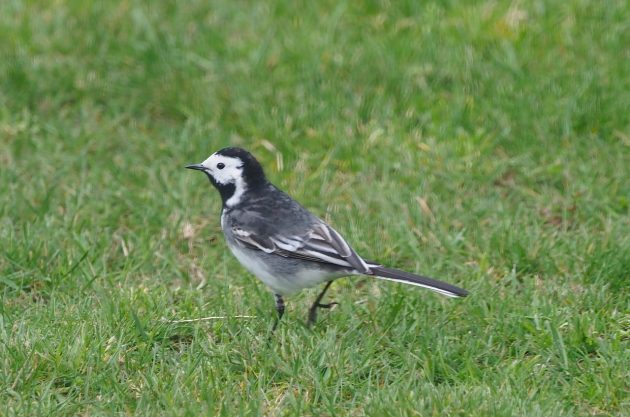
Pied Wagtail, but not one photographed at Wimbledon
Common Terns nest at a number of locations in and around London, including the Wildfowl and Wetlands Trust reserve at Barnes, which is not far, as the tern flies, from Wimbledon.
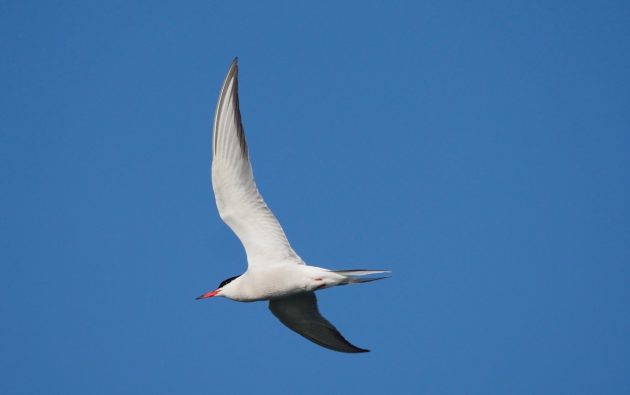
A Common Tern flying over Wimbledon’s Centre Court was a surprise
It was when walking out of the grounds of the All England Lawn Tennis Club that I added a fourth species to my Wimbledon list. This, unlike the Common Tern, was entirely expected: Ring-necked Parakeet. A flock of about a dozen flew over, their raucous calls drawing attention to themselves. Though they only started breeding London around 50 years ago, these parakeets have become one of the capital’s most conspicuous birds. I’ve yet to see one at home in Suffolk, so these birds were a welcome addition to my year list, bringing it up to 181.
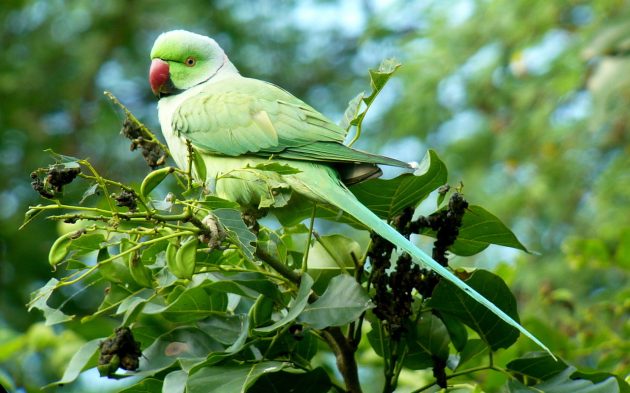
Ring-necked Parakeets have been nesting in London for around half a century
When the parakeets first appeared in London, many of the so-called experts predicted that they would never establish themselves, as they would be unable to cope with the British climate. That wasn’t the case, as London now hosts thousands of breeding pairs, as do many other European cities. It was also predicted that the parakeets would have a detrimental impact on our hole-nesting native species, such as Starlings and woodpeckers, but that doesn’t seem to have happened, either. What is interesting is that they are one of the most urban of birds, much happier in the city than out of it. I have a sneaking liking for them, as they add a touch of the exotic to the urban jungle.
It’s a long drive from my home in Suffolk to Wimbledon, so the night before our visit to the tennis my wife and I had stayed at a hotel in nearby Croydon, again, not promising birding country. However, I’d done a little research beforehand and discovered that there was a local nature reserve, Roundshaw Downs, within an easy walk of my hotel. It boasts 38ha (91 acres) of unimproved chalk grassland, so I thought that it warranted a visit. In the event I didn’t make it, as heavy overnight rain persisted well into the morning. However, when I stepped out of the hotel when the rain finally stopped, I was delighted to spot a male Peregrine circling over the MacDonalds next door.
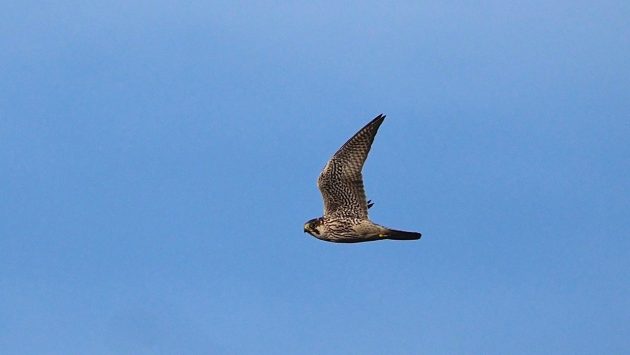
Only New York has more nesting Peregrines than London
This was only my second sighting of a Peregrine in the UK this year, so was a pleasing sight, and a reminder that these falcons are prospering in London. London has the second highest Peregrine population of any city in the world, beaten only by New York. With an abundance of Feral Pigeons the Peregrines are clearly never short of food, but studies have shown that they prey on a wide variety of other species, too, for they are great opportunists. I don’t blame them, as who would want to eat pigeon every day?




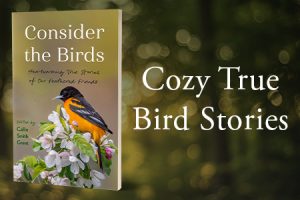


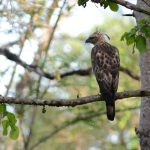
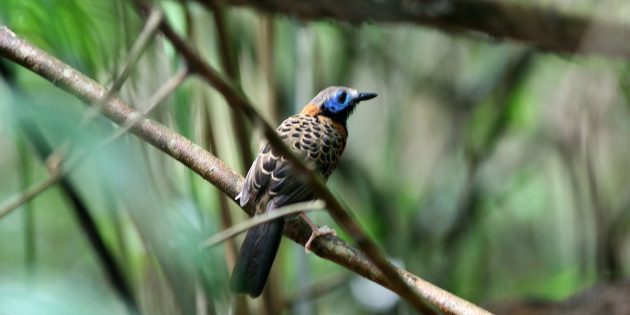
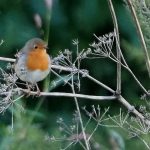
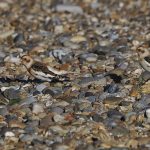
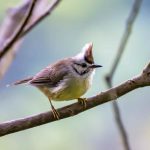


How were the strawberries with cream?
I did enjoy a couple of strawberries, but the carrot cake in the members’ restaurant was even better…
And London peregrines are very fond of preying on the parakeets, so there is a kind of urban ecosystem developing there as well.
Love tennis and especially love birds… Great combo that I was not expecting on 10,000 Birds!
Pam, I posted this piece to show that I can enjoy watching other things than birds (though I never stop looking for birds!)
Wow! You’re a member of Wimbledon! The birds were good – but that’s amazing, too. I’m having a lazy Saturday here so I can watch the women’s final in a few hours.
Now I am going to buy some strawberries so I can make pasta with strawberries and yogurt! I absolutely don’t think this sounds awful.
Hi David from Canada! I’m a keen birder as well as a huge tennis fan, so my eyes light up when I can do both simultaneously, such as noting your Pied Wagtail seen today during the Sinner-Alcarez Men’s Final.
Thanks to a tv cameraperson who picked it up as it landed on the retractable roof briefly, I snapped a very fuzzy screenshot of it off my TV screen, and seeing only the long tail and the black and white, I narrowed the bird down to a Wagtail…so when I thought I’ll see if it turns up on a Google search. Imagine my delight to find your 10,000 Birds posting!
My last such sighting was while I watched this year’s French Open, and a Woodpigeon flashed across Stade Roland Garros…
Sometimes I consider my sports addiction to be a curse when I think that it’s a bit pathetic to be noting birds on the TV, but let me say that I do in fact get outside birding in the fresh air…
Rob Turner, London Ontario Canada